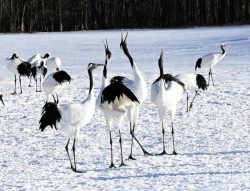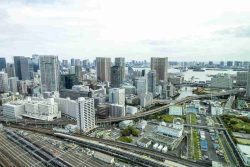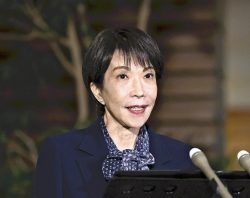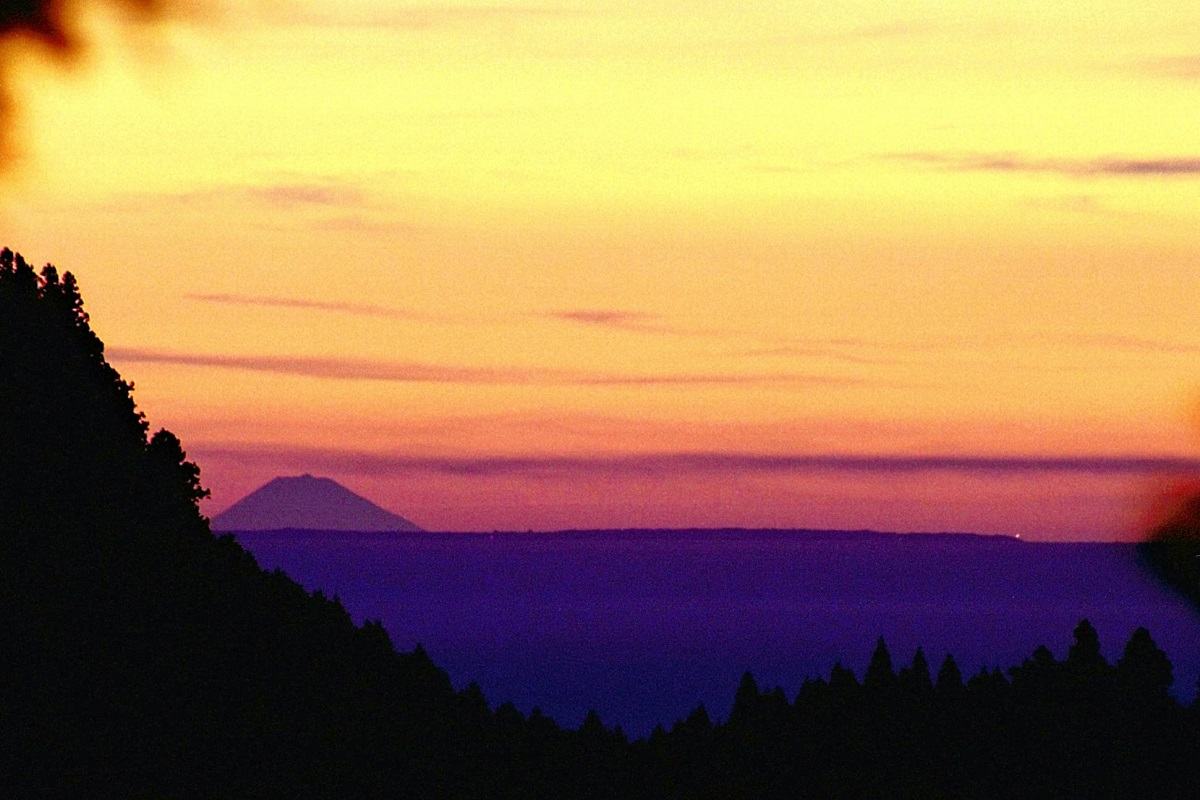
Mt. Fuji, as captured by Masaru Naka in 2001 from the Irokawa Fujimi Toge pass in Nachi-Katsuura, Wakayama Prefecture. He captured the view using an f/16 aperture and a two-second shutter speed.
10:21 JST, February 27, 2023
NACHI-KATSUURA, Wakayama — A surprising number of places mainly in eastern and central Japan are called “Fujimi,” usually meaning that the location offers a view of Mt. Fuji. The sacred mountain’s majestic appearance has long evoked awe, and this year marks its 10th anniversary on the UNESCO World Heritage list.
The town of Nachi-Katsuura in Wakayama Prefecture is thought to be the most distant point from which Mt. Fuji can be seen — some 323 kilometers distant from the peak, as the crow flies.
Nachi-Katsuura is near the southern tip of the Kii Peninsula and the viewpoint is in a mountain pass about 6 kilometers northwest of JR Kii-Katsuura Station. To get to the pass, which sits 900 meters above sea level, visitors must walk along a roughly 30-minute off-trail route on Mt. Myoho near Kumano Nachi Taisha Grand Shrine — another World Heritage site. A sign at the pass reads: “This is the furthermost point in Japan from which Mt. Fuji can be seen.”
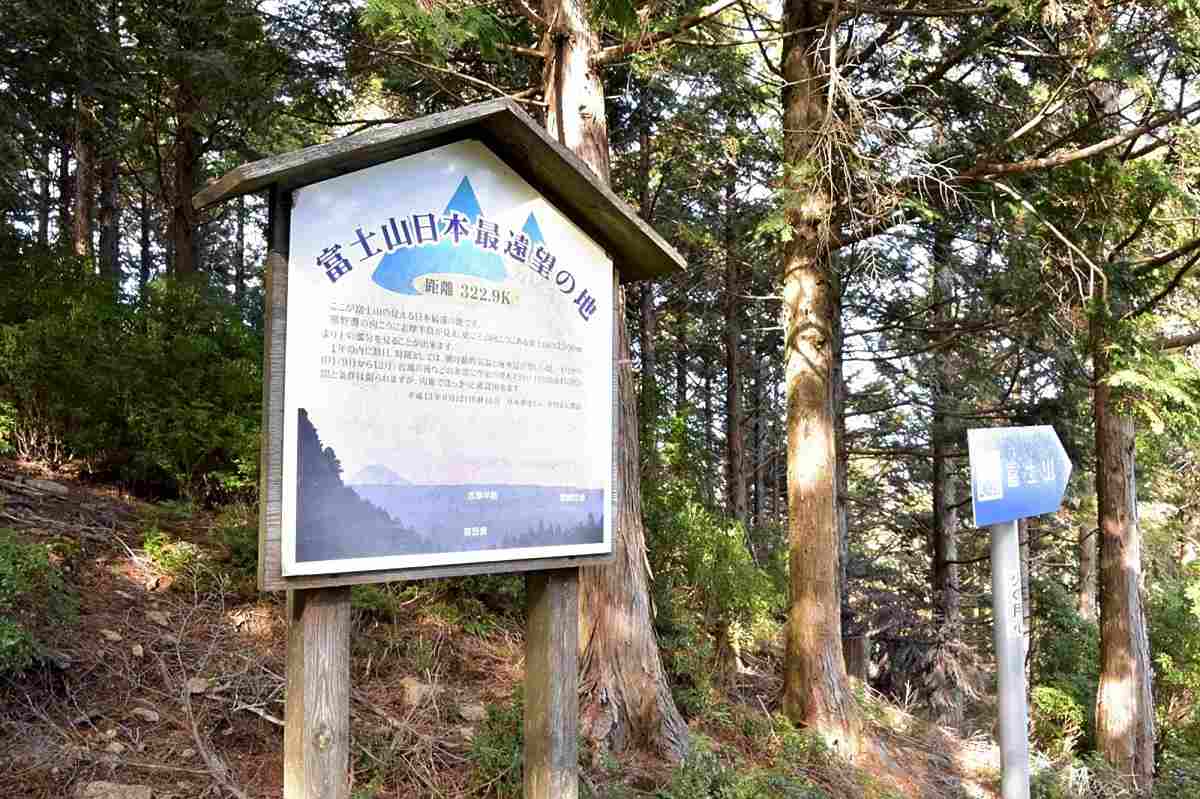
A sign at the Irokawa Fujimi Toge pass in Nachi-Katsuura, Wakayama Prefecture, that reads: “This is the furthermost point in Japan from which Mt. Fuji can be seen.”
During the day, it is difficult to pick out even the Shima Peninsula in Mie Prefecture — a mere 100 kilometers away from the pass. Nevertheless, Mt. Fuji can sometimes be seen from this very same point, as evidenced by some notable photographs.
Clear view
“You can see Mt. Fuji from here.” So runs an old saying in the Kumano region, which stretches from southern Wakayama Prefecture to southern Mie Prefecture. This phrase is likely based on the fact that there are no high mountains to block the view of Japan’s highest peak, only the sea to the northeast.
In 1995, a professional photographer captured a view of Mt. Fuji from the mountainous area of Nachi-Katsuura — some 320 kilometers away. Two years later, the same photographer snapped another view of the peak, 2.6 kilometers more distant from the location of the previous snap. This picture became a hot topic, especially among locals.
Masaru Naka was among those whose ears pricked up. The 72-year-old amateur photographer, who lives in Kiho, Mie Prefecture, is a longtime photography hobbyist, with a particular interest in landscapes and the night sky.
While reading a photography-related book, Naka had happened across a remark that said Mt. Fuji was theoretically visible from a point 300 meters further removed from the most distant point recorded so far — the 1997 pro cameraman’s snap. Inspired by this “furthest-photo-yet” idea, Naka and his friends began devising ways to photograph the mountain from this rumored spot in 1998.
At that time, devices that could tap into the global positioning system were not widely available, making it difficult to pin down a suitable location to shoot the view. Instead, Naka wandered around animal trails in the forest, map in hand, searching for the right point.
He eventually zeroed in on the perfect spot with help from local mountain enthusiasts. He carefully marked his route — walking the path more than 20 times — to avoid getting lost.
“I felt there was a certain romance in capturing a photograph of Mt. Fuji from the furthermost point,” Naka said. “I became quite passionate about it.”
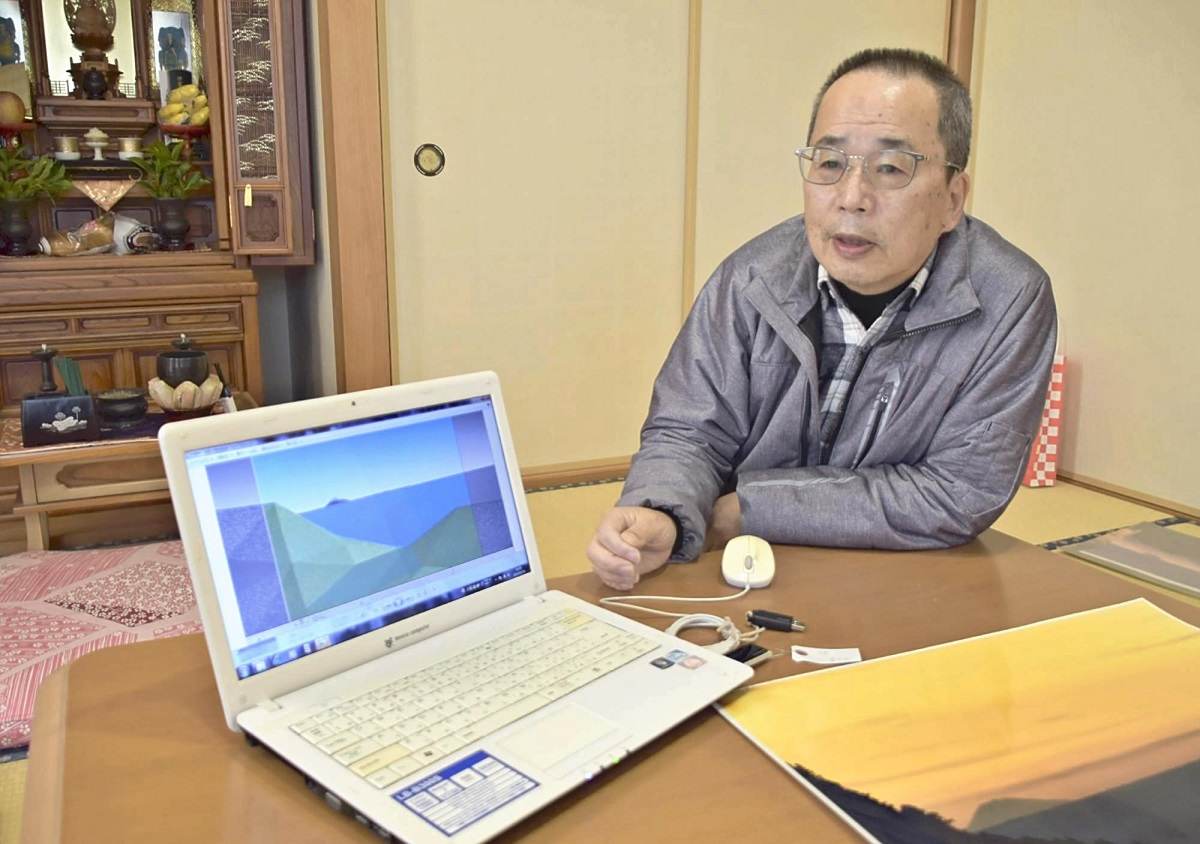
Masaru Naka speaks to The Yomiuri Shimbun in Kiho, Mie Prefecture.
Rare opportunity
After four unsuccessful attempts, Naka struck photographic gold on Sept. 12, 2001. The morning air was crystal clear following a recent typhoon. And, as the skies brightened just before 5 a.m., Naka looked through his camera’s lens and beheld the hallowed mountain’s outline. “The strangest feeling crept over me, like the world was on my side,” Naka recalled. He snapped the view eagerly.
Following the shoot, Naka talked with officials of the local forestry cooperative, and they decided to dub the point “Irokawa Fujimi Toge” (Irokawa Fuji-view mountain pass). Although unofficial, locals quickly picked up on the name, and it remains in use more than 20 years later.
Mt. Fuji can only be observed from the pass under certain conditions. According to Naka, the best times are clear summer mornings when the lowest ambient temperature is similar to that of the sea.
“If you’re lucky, you might be able to see it with the naked eye around 30 minutes before sunrise,” Naka said. However, he noted that he has only heard of a few people capturing photographs of the mountain from the spot.
Naka has never seen Mt. Fuji up close, but he says he retains a vivid memory of the peak “floating” into view in the morning glow.
“The distance merely underlines [Mt. Fuji’s] regal solemnity,” he said.
Extend your trip!
Nachi Waterfall
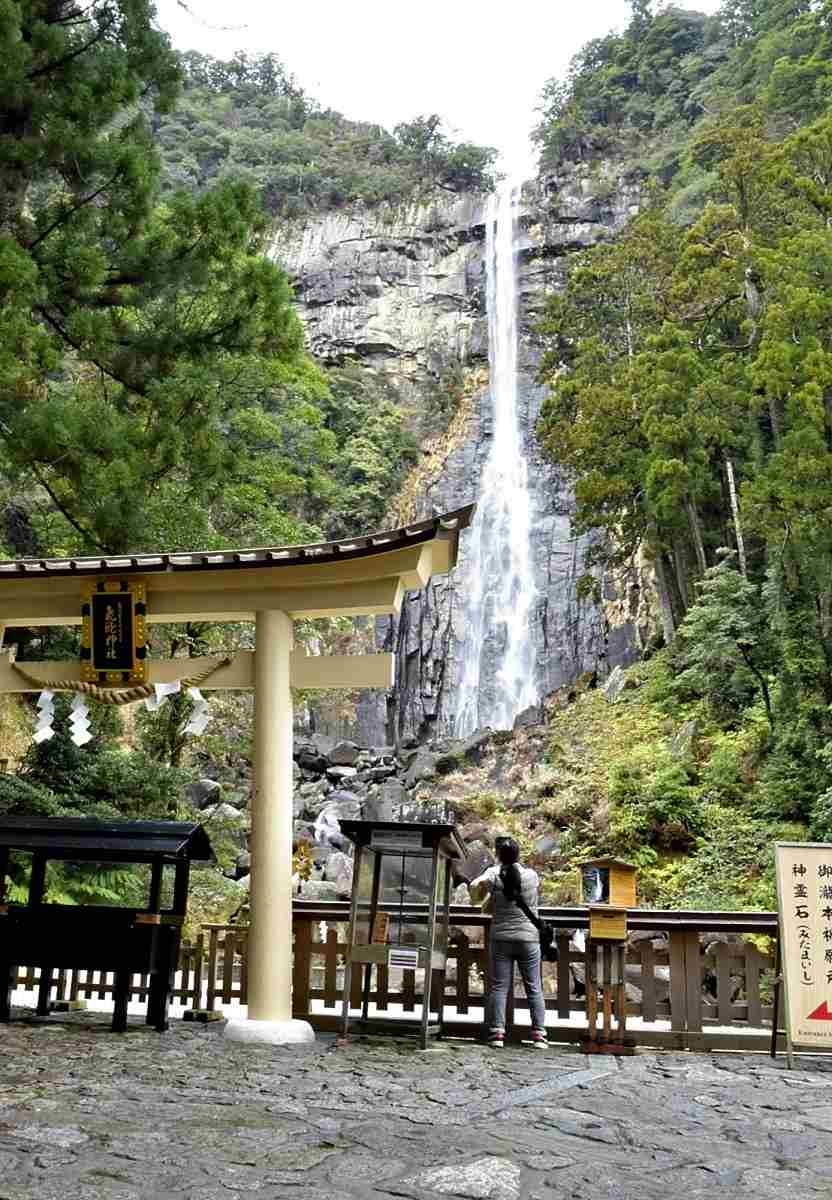
Nachi Waterfall
Measuring 133 meters tall and with one ton of water plunging downwards each second, Nachi Waterfall is considered one of Japan’s three most famous vertical cascades. The breathtaking view leaves a deep impression on many visitors.
The waterfall — registered as a UNESCO World Heritage site in 2004 as part of the Sacred Sites and Pilgrimage Routes in the Kii Mountain Range — is worshipped as the deity of Hiro Shrine, the auxiliary shrine of Kumano Nachi Taisha Grand Shrine. An annual illumination event is held in the fall during the year-end and New Year season.
How to get there
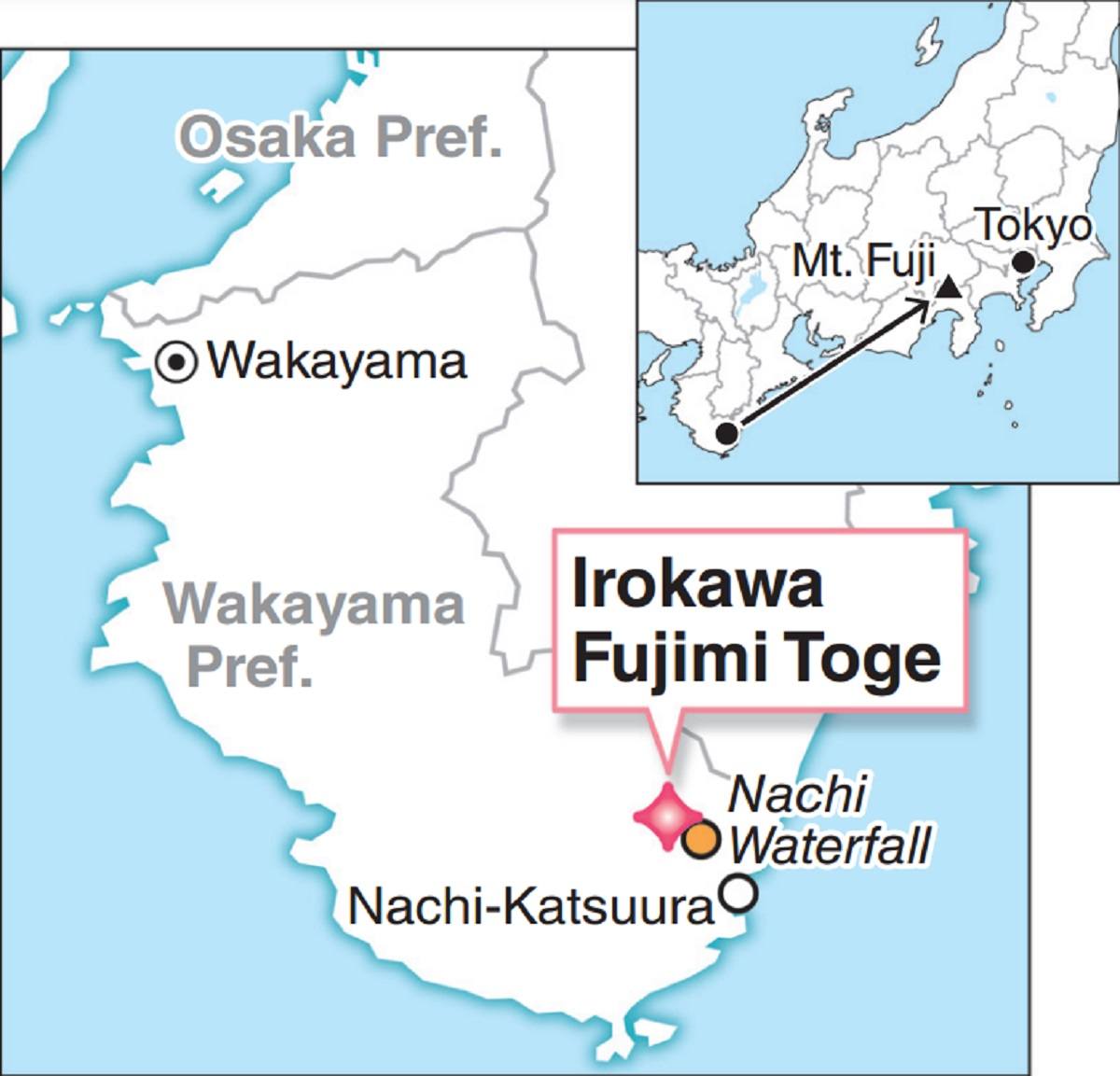
Reaching the Irokawa Fujimi Toge pass requires a roughly 90-minute drive from the Susami-Minami Interchange on the Kisei Expressway to the Nachi Highland Park parking lot, then a roughly 2-hour mountain-trail walk. Caution is advised, as the road near the mountain pass is narrow and there is a danger of falling rocks. Cars are not allowed to enter the area.
Related Tags
"Features" POPULAR ARTICLE
-

Students Recreate 19th-Century Bento Boxes Made for Ino Tadataka’s Survey Team in Hot Spring Town on Nakasendo Road
-

Santa Claus Delivers Christmas Presents to Penguins at Aquarium in Japan’s Nagasaki Prefecture
-

Sumo Restaurant in Tokyo Teaches Foreign Visitors About the Ancient Sport, with Bouts Between Retired Rikishi
-
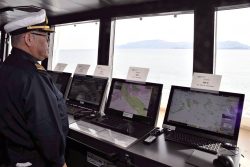
Autonomous Passenger Ship Connects Mainland with Remote Island in Seto Inland Sea; World’s 1st Commercially Operated Autonomous Vessel
-
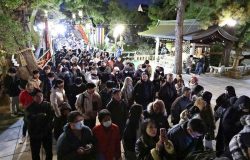
Osaka’s Sumiyoshi Taisha Shrine Bustles with New Year’s Visitors
JN ACCESS RANKING
-

As Chinese Tourists Shun Japan, Hotels and Stores Suffer
-

Tokyo Economic Security Forum to Hold Inaugural Meeting Amid Tense Global Environment
-

Osaka-Kansai Expo’s Economic Impact Estimated at ¥3.6 Trillion, Takes Actual Visitor Numbers into Account
-

Japan Govt Adopts Measures to Curb Mega Solar Power Plant Projects Amid Environmental Concerns
-

BOJ Gov. Ueda: Highly Likely Mechanism for Rising Wages, Prices Will Be Maintained




